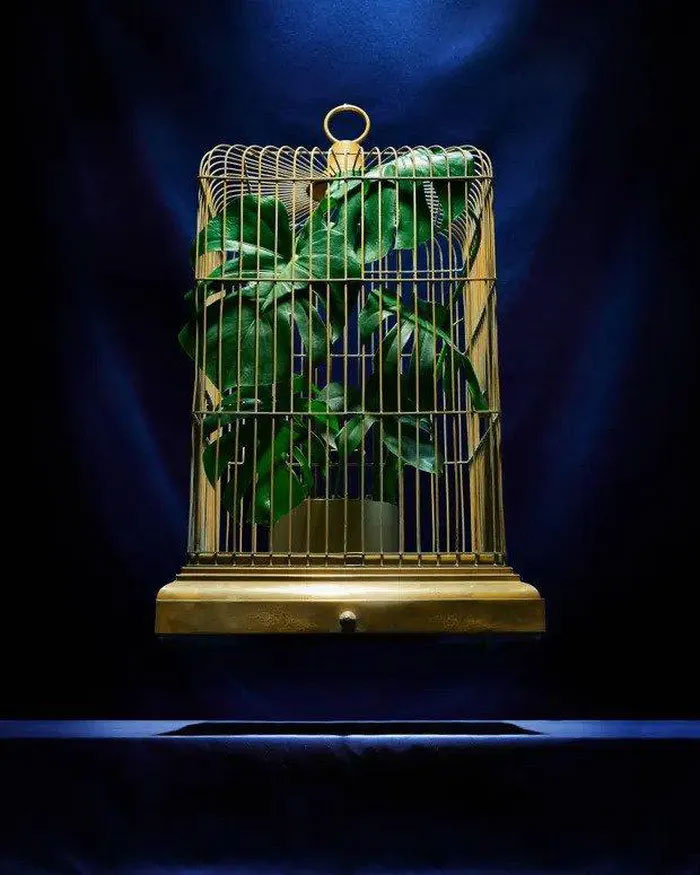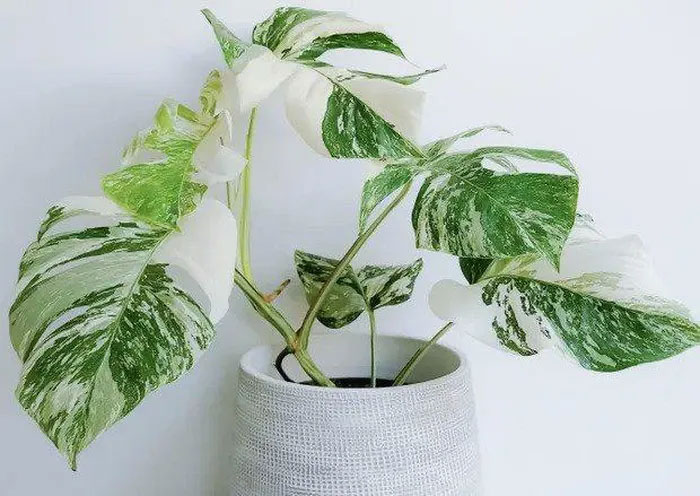About a month ago, a Reddit account shared a story on a forum about a heated conflict between a grandmother and her 14-year-old granddaughter, which left the grandmother so furious that she decided to cut ties with the girl.
According to the account, the grandmother had to be away for two weeks and asked her granddaughter to help take care of her collection of 35 rare houseplants. As compensation, she promised to gift the girl a cutting to grow on her own.
Upon returning, the grandmother was shocked to witness the “massacre” of her plants. All were severely cut back. The Cebu Blue Pothos, String of Pearls, Ruby Necklace, Silver Stripe Philodendron, Golden Pothos, and others were all destroyed. The granddaughter had taken all the cuttings, even the pruning shears.
Worse yet, the Pink Princess Philodendron was reduced to just two leaves, and the Monstera Albo was left with only three leaves.

Many houseplants are becoming increasingly valuable, with prices reaching thousands of USD. (Photo: The Observer).
When the grandmother learned that the girl had sold all the cuttings, she was devastated and extremely angry. Some might have thought that the grandmother’s reaction was excessive for a naive 14-year-old.
However, plant enthusiasts pointed out that the girl’s actions were not as innocent as they seemed, as some plants in the collection were worth thousands of USD. For example, the Monstera Albo has seen its value soar over the past two years; just one cutting can sell for thousands of USD. This was not a mistake but a deliberate act of theft.
The Reddit community unanimously agreed that the grandmother was not at fault in this situation.
The Craze for Rare Plants
Brexit, the COVID-19 pandemic, and social media have combined to create a new craze.
When garden centers closed in 2020, many growers in the Netherlands halted the production of indoor plant varieties in high-tech greenhouses, leading to a global supply shortage.
At the same time, the demand for indoor plants skyrocketed. Brexit pushed prices up while the energy crisis continued.
These factors only “added fuel to the fire.” On Instagram, the trend of showcasing expensive plants is called plant flexing. Rare plants that were priced under 130 USD just 2-3 years ago now fetch thousands of USD at online auctions.
Last year, a New Zealander sold a small pot of super-rare Rhaphidophora tetrasperma (also known as Mini Monstera) with 8 leaves for 18,000 USD.

A close-up of the Monstera Albo. (Photo: Alamy).
Tyler Thrasher, a plant breeding expert in the U.S., noted: “I’ve heard that professional growers are quoting prices up to 52,000 USD for certain varieties. These plants are often expensive because they require lab tissue culture.”
Like other rare items, the rarer the plant, the higher the price. For Monstera Albo, its high value lies in the unique splashes of white on its leaves, known as variegated leaves. The ratio for a regular pothos to have variegated leaves is 100,000:1.
Popular plant varieties on Instagram, especially the mutant pothos with Half-Moon leaves (half green, half white), often sell for 13,000 USD or more on eBay, Etsy, and Facebook Marketplace. Cuttings of Monstera Albo range from a few hundred to several thousand USD (though there is a risk that cuttings from variegated plants can still grow into solid green plants).
The Dark Side of the Craze
This is considered the dark side of the bubble phenomenon: speculation, fraud, and crime related to houseplants. Armed plant thefts, cutting plants from botanical gardens, and some unscrupulous sellers even painting leaves white.
Thrasher first recognized the problem when he saw that people were selling “nodes” (the joints on the stem) only about 2.5 cm long that contained plant buds instead of whole cuttings to maximize profits.
These plant nodes can sell for 65 USD or more. However, their chances of growing into a plant are very low compared to whole cuttings.
Some people even sell nodes without buds, which have no chance of growing into a plant.
Thrasher commented: “They are advertising something that has a low chance of becoming a plant. Since the price of a mature plant is 3,000 USD, it’s hard to sell, so a node offered at 200 USD will be more easily accepted by buyers, even though the outcome is hit or miss.” Many buyers have fallen victim to this trick.

Pink princess philodendron has pink variegated leaves, but not naturally. (Photo: Kcrw).
On Facebook, a new variant of Calathea Makoyana Pink Diamond (also known as Peacock Plant) was introduced, advertised as having unique white variegated leaves, causing a stir in the market.
Quickly, botanist Robert McCracken spoke up: “I have never seen nature create such a shade, but it is clear that the leaves have been painted in a sophisticated manner.”
In 2019, the Philodendron Pink Congo became a social media phenomenon, sought after for its striking pure pink splashes on the leaves.
However, when people brought it home to grow, many noticed something strange: the bright pink leaves began to fade, turning yellow and then green. McCracken confirmed that this plant was not a natural product.
After investigation, he discovered that people had artificially colored the leaves of this philodendron by releasing a color-changing gas. This is a technique used in weddings and events, but certainly, this is not a new plant variety.
Consequences
This situation has arisen partly due to a lack of regulation. For serious plant enthusiasts, transactions do not occur through eBay or Etsy but through private plant exchange groups on Facebook, with many terms and conditions.
There are even groups of people who consider themselves “plant thieves”—engaging in the hunting and digging up of cuttings from nurseries and botanical gardens. They do not see this as theft but take pride in it. The value of stolen goods can reach thousands of USD.
Dr. Carly Cowell from the Royal Botanic Gardens at Kew acknowledged this issue and expressed concern about the uncontrolled trade situation. At Kew, they have strict control processes to prevent harmful diseases from spreading widely to the horticulture or agriculture sectors.
Many cases have shown that ordinary Monstera plants are being disguised as Monstera Albo, actually infected with a mosaic virus, resulting in the appearance of light patches on the leaves.
Kaylee Ellen, a YouTuber specializing in houseplants, who has been pioneering the fight against price gouging and plant counterfeiting, also exposed the Philodendron Pink Congo case and stated she would continue her mission with many new videos.

















































